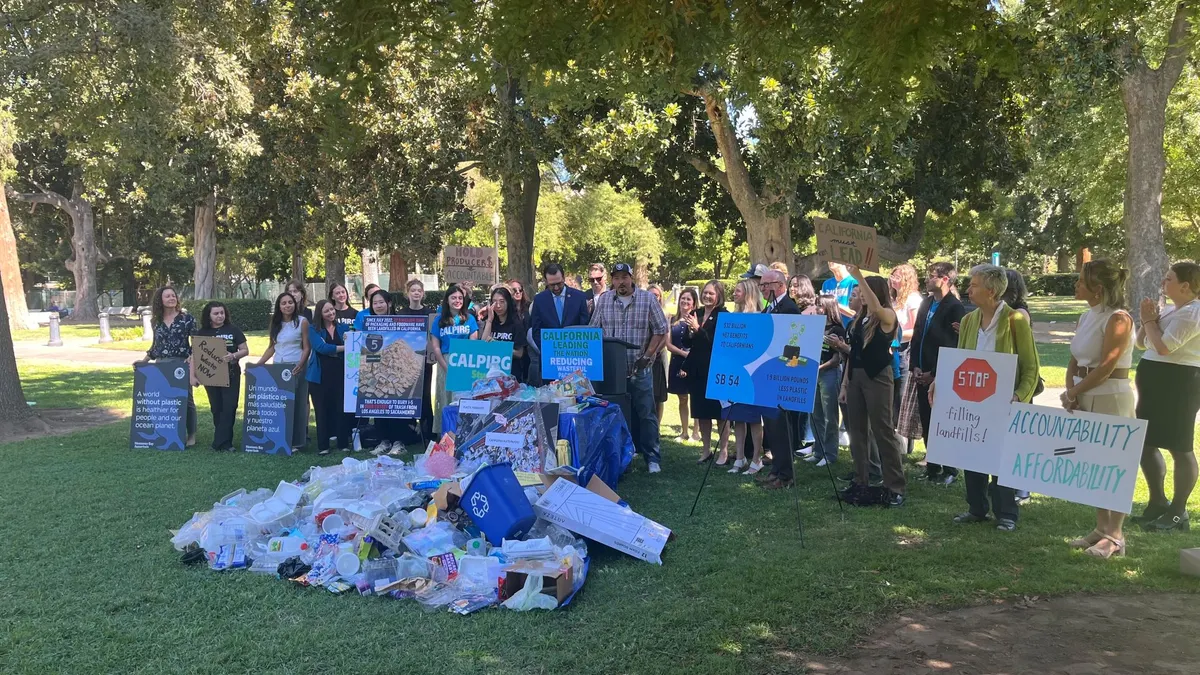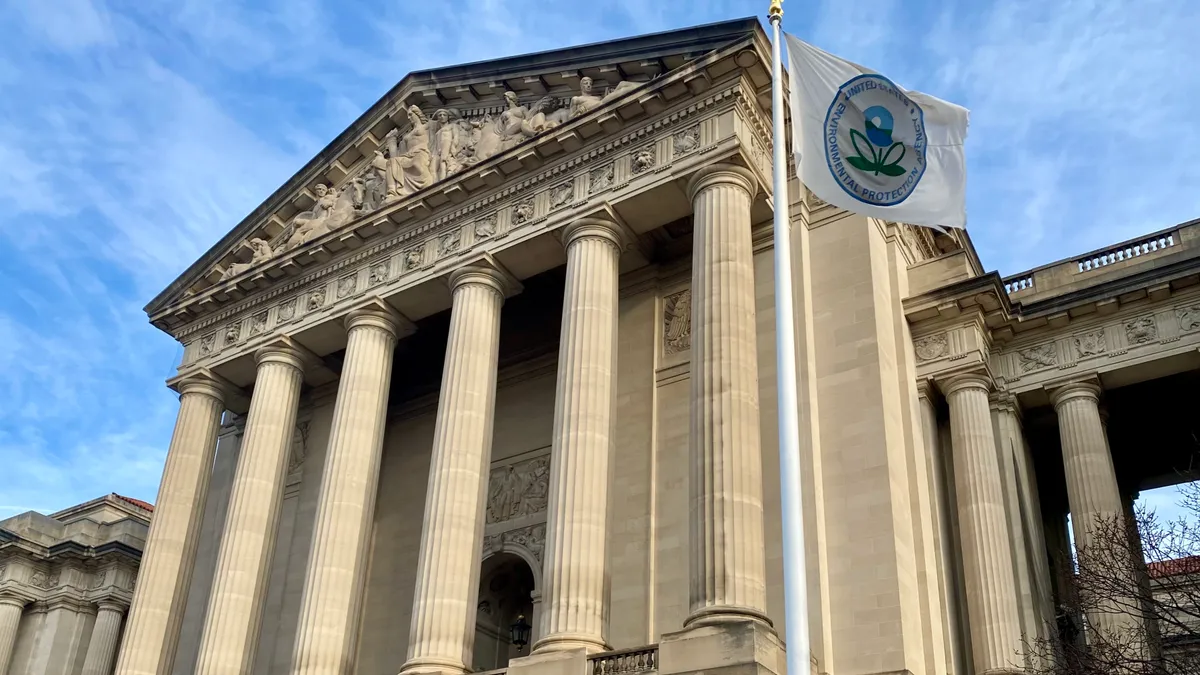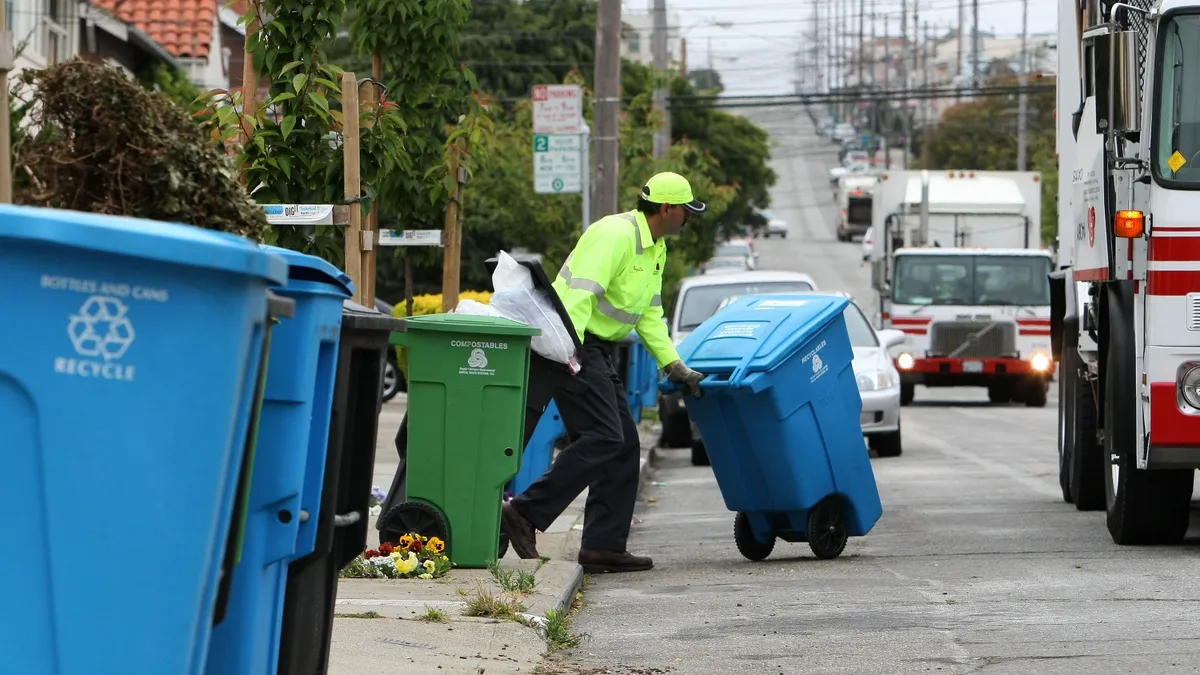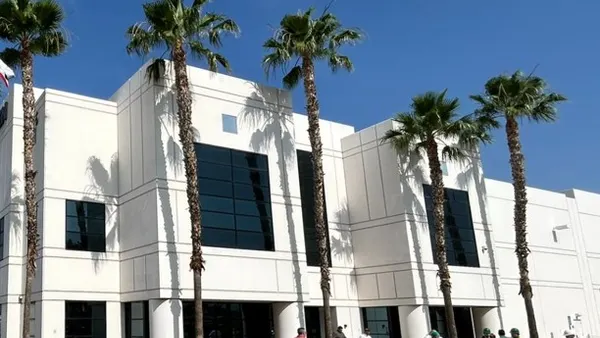Dive Brief:
- California lawmakers and recycling advocacy groups are urging Gov. Gavin Newsom and CalRecycle to implement the state’s extended producer responsibility for packaging law, SB 54, “as written, negotiated and enacted.” Speakers expressed frustration with aspects of the rulemaking process during a press conference on Tuesday.
- CalRecycle is in the midst of its second attempt at formal rulemaking to implement the law. It expects to open up a 45-day public comment period on the latest draft sometime by the end of the month, said Michelle Martin, deputy director of CalRecycle’s circular economy division, in a separate public meeting hosted by the agency on Tuesday.
- Several proposed revisions in the latest draft regulations would undermine the intent of SB 54, which was to hold packaging producers accountable for pollution, said state Sen. Ben Allen, the author of SB 54. He and others oppose broader language allowing exemptions for certain kinds of packaging and adding a two-year delay to the rollout of ecomodulated fees. The group also opposes language changes they say would “weaken protections against chemical recycling,” which they say could create pollution.
Dive Insight:
CalRecycle’s journey of restarting the formal rulemaking process has created confusion among stakeholders who are concerned with how the results could alter the original intent of SB 54, along with upcoming deadlines for producers to comply with the law.
Newsom called for restarting the regulatory process for SB 54 in March after regulations were not submitted by a key deadline. Newsom first signed SB 54 into law in 2022, with an aim of reducing plastic packaging and raising recycling rates, among other initiatives.
Draft regulations were first shared a year ago, followed by public input, but final regulations were never adopted after that process. A similar process, this time with an updated set of draft regulations, is expected to start soon. “With possible minor adjustments, this is anticipated to be the version of the proposed regulations released for the 45-day formal rulemaking comment period,” CalRecycle noted on its SB 54 website.
But lawmakers and environmental groups represented at the press conference felt that Newsom caved to business pressures by allowing a redo on the regulatory process earlier this year.
Participants included state assembly members and senators, along with members of CALPIRG, Oceana, the National Stewardship Action Council, Californians Against Waste and members of other NGOs and environmental justice groups such as the Valley Improvement Project.
“We spent three years in negotiations and a public rule making process in good faith, but the governor disregarded those rules,” said Martin Bourque, a member of the Alliance for Mission-Based Recycling, during the event. “As recyclers, we bear the brunt of poor but profitable packaging decisions made by brands and retailers. SB 54 was supposed to fix that,” he said.
State leaders have said the regulatory restart process would not shift the timeline for implementing the law, even with anticipated revisions. Zoe Heller, CalRecycle’s new director, acknowledged during a forum in June that implementing EPR is “very, very hard” but is optimistic that California’s process would lead to an improved set of regulations.
Yet SB 54 advocates such as NSAC argue that the delayed regulations will inevitably delay further rollout of SB 54 and could invite legal action. Executive Director Heidi Sanborn said in an interview that the regulatory uncertainty has led to some producers delaying important packaging design changes. “They just don't know what they're going to be required to do or not,” she said.
The draft also makes a broader range of products eligible for exclusion from the program, which Sanborn said would put more financial pressure on the companies that are still required to pay into the EPR program for packaging that’s not exempt from the program.
NSAC believes this would “likely result in litigation from producers that are non-exempt and could cost Californians billions in lost benefits while undermining EPR programs across the nation,” the organization said in a news release.
A group of California lawmakers pointed out in a letter to the governor that the broader exemptions could also increase “the amount of contamination in the recycling stream and thereby increasing the need for enforcement.”
Broader exclusions also “weaken standards, creating loopholes and shifting costs back onto communities,” Assemblymember Gregg Hart added during the event.
Those conditions could also overburden recyclers already dealing with contamination, especially if more items like film and flexible packaging end up in curbside bins as a result, Bourque added.
Allen, the author of SB 54, said lawmakers are closely monitoring the draft regulation process with the hope of seeing updates that acknowledge their concerns. If those changes aren’t reflected in subsequent drafts, lawmakers could consider introducing new bills or possibly draw up a ballot measure, he said during the press conference. “In order to deliver the results our communities are counting on, we need to ensure that SB 54 is implemented to its full extent with regulations that adhere to the letter and intent of the law,” he said.
Meanwhile, the Circular Action Alliance, the producer responsibility organization tapped to help implement the packaging EPR program in California, announced on Tuesday that it opened its new registration portal for all producers obligated under the law. Producers must complete their registration with CAA before Sept. 5.
CAA plans to also open a separate process for producers to report baseline 2023 packaging data, with that information due Nov. 15.
“In 2025, a key priority in California is building the registration and reporting processes that producers need to stay on track with upcoming EPR obligations,” said Geoffrey Inch, CAA’s senior vice president of producer services, in a news announcement.
This story first appeared in the Waste Dive: Recycling newsletter. Sign up for the weekly emails here.











